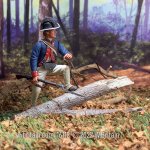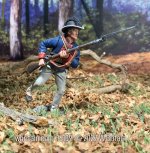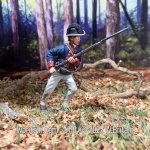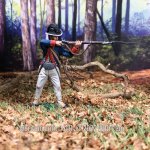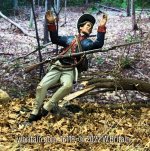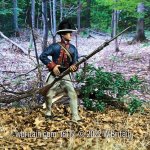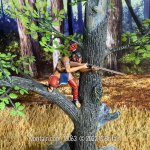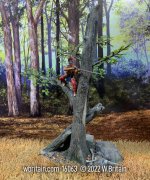WBritain
Master Sergeant
- Joined
- Oct 20, 2005
- Messages
- 1,251
Hello All,
We are really excited to introduce a new sub-range to our Clash of Empires Collection: The Legion of the United States (often called Waynes Legion after General "Mad" Anthony Wayne). In the 1790's after a number of unacceptable defeats at the hands of the Native Warriors in the Northwest Territory (now present day Ohio, Indiana, Illinois, Michigan, Wisconsin and a portion of Minnesota) President Washington realized that a professional, standing army was needed. Because Washington and Revolutionary War General "Mad" Anthony Wayne both had an appreciation of Julius Caesar's writings on The Gallic Wars and surmised that Caesars tactics used on the Gauls would probably work on the native elements in North American they designed this 'new' army on the Roman Legions. General Wayne was given command of these new Legions. The Legion was successful at its first battle, Fallen Timbers in August of 1794.
These are the first of the new range:
These are in stock and available now.
16112 - Legion of the United States (Wayne’s Legion) Infantryman Advancing Loading, 1794
On 11 September 1792, Major General Anthony Wayne issued an order to distinguish the various sub-legions of the U.S. Army. The focus was on the decoration of the caps, probably made from cut down cocked hats, and made to resemble the light infantry caps of the type worn during the War for Independence. The first Sub-Legion would have white woolen binding sewn to the edge of the caps, use white feather plumes, and have black hair decorating the crown. The second would bind the edge of the caps with red, have red plumes, and use white hair on the crown. The third would use yellow binding, a yellow feather plume, and use black hair. And the fourth was to use green binding and plumes within a white hair decoration. Cow tails were probably the source for the hair on the caps. Sometime before 1794 the caps were replaced with a more modern round hat. Black bearskin roaches were applied running from front to back on the crown of the hat, replacing the long cow tail decorations.
1/30 scale
Matte Finish
1 Piece Set
$52
We are really excited to introduce a new sub-range to our Clash of Empires Collection: The Legion of the United States (often called Waynes Legion after General "Mad" Anthony Wayne). In the 1790's after a number of unacceptable defeats at the hands of the Native Warriors in the Northwest Territory (now present day Ohio, Indiana, Illinois, Michigan, Wisconsin and a portion of Minnesota) President Washington realized that a professional, standing army was needed. Because Washington and Revolutionary War General "Mad" Anthony Wayne both had an appreciation of Julius Caesar's writings on The Gallic Wars and surmised that Caesars tactics used on the Gauls would probably work on the native elements in North American they designed this 'new' army on the Roman Legions. General Wayne was given command of these new Legions. The Legion was successful at its first battle, Fallen Timbers in August of 1794.
These are the first of the new range:
These are in stock and available now.
16112 - Legion of the United States (Wayne’s Legion) Infantryman Advancing Loading, 1794
On 11 September 1792, Major General Anthony Wayne issued an order to distinguish the various sub-legions of the U.S. Army. The focus was on the decoration of the caps, probably made from cut down cocked hats, and made to resemble the light infantry caps of the type worn during the War for Independence. The first Sub-Legion would have white woolen binding sewn to the edge of the caps, use white feather plumes, and have black hair decorating the crown. The second would bind the edge of the caps with red, have red plumes, and use white hair on the crown. The third would use yellow binding, a yellow feather plume, and use black hair. And the fourth was to use green binding and plumes within a white hair decoration. Cow tails were probably the source for the hair on the caps. Sometime before 1794 the caps were replaced with a more modern round hat. Black bearskin roaches were applied running from front to back on the crown of the hat, replacing the long cow tail decorations.
1/30 scale
Matte Finish
1 Piece Set
$52
Attachments
Last edited:


